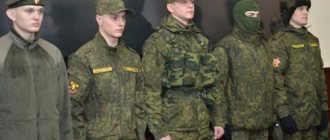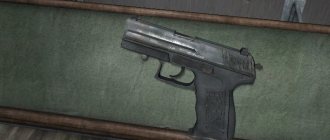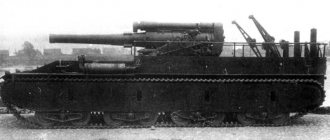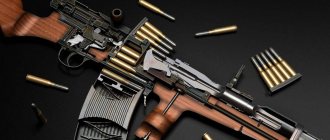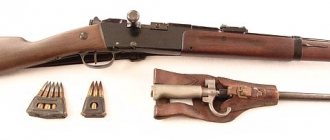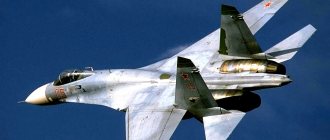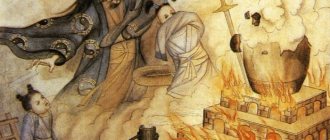The birth of the hussaria
In 1458, the Hungarian King Matthew ordered the formation of a special detachment of nobles to protect against Turkish aggression. This detachment was to be assembled from nobles, each of whom was to bring with him 20 armed servants with riding horses. Of course, only wealthy people could carry out such an order, and gather only in case of an immediate threat.
However, the idea took root in a neighboring kingdom. The Poles, big fans of fighting, and even with pathos, gathered a similar militia, organizing one of the best heavy cavalry units in history. The Polish gentry organized banners of heavy hussars, equipped and armed with the latest technology of the time.
Rich armor made of the best metal, selected horses from all over the Polish kingdom, and many types of weapons, including firearms, made the hussars a force on the battlefield.
Large wings covered with white or black feathers, attached to the saddle or to the shell, instilled fear in the enemies.
In fact, it was for these wings that they got their name, winged hussars. In addition to shiny steel, leopard or tiger skins were used, and the uniform itself can be conditionally called red.
Impressed by clashes with gentry banners on the battlefield, Russian military leaders decided to start something similar. By royal decree of Tsar Alexei Mikhailovich, the first hussar banners were created in Moscow, following the example of the Polish ones. However, they did not make a decisive contribution to the war, especially since the army was awaiting the reforms of Pyotr Alekseevich.
Russian hussars of the 18th century
Peter the Great, busy transforming Russia, did not introduce hussars into the army. Maybe he just didn’t get around to it, maybe they haven’t yet become fashionable in Europe, maybe the Cossacks were enough for him as light cavalry. In 1723, “willing Serbian people” were called up to settle in Russia, from which regular light cavalry units were formed, fitting the description of hussars in their essence. It cannot be said that they were developing what could be called a hussar uniform.
During the reign of "Peter's daughter", Empress Elizabeth, the unfortunate error of the lack of regular hussar units was corrected. Ivan Samoilovich Horvat, a Serb by nationality who came from Austria, was tasked with forming several hussar units. The nobles, who loved flamboyance and wealth, quickly realized the advantages of the new regiments in terms of uniform.
The Hungarian costume was the best suited for the madness of decorating the uniform.
At the same time, the foundations of the hussar uniform were formed, which survived until the beginning of the twentieth century.
What was included in the uniform of the first Russian hussars Elizaveta Petrovna:
- dolman, a short, single-breasted jacket with cords and a stand-up collar;
- mentik, also a short jacket trimmed with fur, worn over a dolman, in warm weather thrown over the shoulder with a clasp on the top cord, which created the impression of “dragging”;
- chikchirs, leg-tight cavalry leggings, often made of elk leather;
- sash with gombami, that is, interceptions;
- tashka, a small bag hanging near the knees, on the left side, initially for cartridges, but then, rather, for decoration, the monogram of the sovereign or empress was necessarily applied to it;
- a hat, felt or fur, replaced by a shako and cap at a later time;
- a bandolier belt and a carbine belt, usually made of plain black leather, were worn crosswise.
The early hussars had a privilege that was the envy of the rest of the army. They didn’t have to tire themselves out arranging their hairstyles, curls and other things. True, Peter III and Paul decided otherwise, but the cavalrymen still had more concessions.
It is interesting that according to army regulations, officers and ordinary hussars hardly differed in uniform. Officers only had to wear gold and silver buttons and embroidery, as well as yellow morocco boots with gilded spurs; jewelry was not forbidden.
Yes, serving in the hussars was not cheap.
New hussar regiments were formed, their uniform colors changed all the time, sometimes radically. The colors of the uniforms are formed, red, blue, green and black in different regiments.
February 26, 1784 became a tragedy for thousands of hussars, since by decree of Empress Catherine II, all hussar regiments were reorganized into light horse regiments. The few remaining units were brought together into one consolidated regiment and sent for experiments to the heir to the throne, Pavel Petrovich. True, in 1788, two regiments again received the name hussars, and in the army no one really called them light horse regiments. The Russian army again met the turn of the century and the Napoleonic Wars with gallant hussars.
Grodno regiment
The Grodno Hussar Regiment was formed in the city of Toropets in 1806. It included five squadrons that had previously been expelled from the Olviopol, Alexandria and Izyum regiments.
Already in 1807, the regiment received its first baptism when it participated in the Battle of Preussisch-Eylau. In the winter of 1808-1809, the Grodno hussars made an unprecedented raid on the ice of the Botanical Bay, ending up in Sweden. During the Patriotic War they operated in the St. Petersburg direction. For example, they took part in the battle of Klyastitsy.
Since 1824, the historical name of the regiment was officially transferred to the newly formed Life Guards Grodno Hussar Regiment. It was decided to rename the old regiment Klyastitsky.
It was to this hussar regiment that Lermontov was assigned in 1834 after graduating from the school of guards ensigns. At the same time, the poet continued to lead a rather riotous and dissolute life.
His contemporaries note that Lermontov was completely indifferent to service in the Grodno Hussar Regiment. Moreover, it was then that he began to write his first famous works, which so amazed and surprised his contemporaries.
After the publication of his poem “The Death of a Poet” in 1837, a trial followed, ending with his arrest. It is known that the emperor himself followed the process. Friends and family did everything possible to mitigate the punishment as much as possible. As a result, he was transferred to the Nizhny Novgorod Dragoon Regiment and then sent to the Caucasus.
His first exile turned out to be short-lived. An influential grandmother ensured that within a few months he was returned to the Grodno Hussar Regiment near Novgorod. Lermontov went from there to the Life Guards, traveling with it throughout the territory of the entire modern Azerbaijan.
When he returned from the trip, everyone noted how he had changed morally. These changes greatly influenced his worldview and creativity.
Hussars in the War of 1812
The real finest hour for the Russian light cavalry was the invasion of Napoleon's army in 1812. Russia met this war with, among other troops, 13 hussar regiments.
They differed, as was customary, in colors:
| Regiment | Dolman | Mentik | Chikchirs | Cuff collar | Cord color |
| Life Guards Hussars | Red | Red | Blue | Blue | Yellow |
| Alexandrian | Black | Black | Black | Reds | White |
| Akhtyrsky | Brown | Brown | Dark blue | Yellow | Yellow |
| Belorussian | Blue | Red | Dark blue | Reds | White |
| Grodno | Blue | Blue | Blue | Sky blue | White |
| Elisavetgradsky | Grey | Grey | Greens | Greens | Reds |
| Izyumsky | Red | Blue | Blue | Blue | White |
| Irkutsk | Black | Black | Reds | Reds | Reds |
| Lubensky | Blue | Blue | Blue | Yellow | White |
| Mariupol | Dark blue | Dark blue | Dark blue | Yellow | Reds |
| Olivopolsky | Green | Green | Reds | Reds | White |
| Pavlogradsky | Green | Sky blue | Green | Sky blue | Reds |
| Sumsky | Grey | Grey | Reds | Reds | White |
The edges of everyone except the Life Guards were white. The Guard wore this element in black. Instead of hats, shakos are introduced. However, they were worn only in battle and in parades. Taking into account the cost of this headdress, in everyday life it was replaced with simple caps.
By the way, the word cap itself has a cavalry connotation; they collected fodder in it and could feed a horse.
The issue of cost also concerned the form itself. Often out of formation, the hussars wore simple infantry frock coats, since their embroidered uniforms did not withstand the daily care of horses, which, by the way, any hussar had to do himself.
Therefore, it was difficult to outwardly distinguish a dashing grunt from, for example, an Aesculapian by his uniform.
Settled regiments
The next stage in the development of the hussars were the so-called settled regiments. In 1776, a decree was issued on the creation of ten such military formations, which were located on the territory of the Novorossiysk and Azov provinces. Their main task was to protect the borders of the Russian Empire in the south.
Later, twelve more hussar formations were created as part of the Russian Imperial Army. These were exclusively shelves.
By the beginning of the 20th century, only two guards regiments of the Life Guards remained in the Russian army. Let's talk about several military formations that left the most noticeable mark on history.
Hussars in the 19th century
The accession to the throne of Nicholas I resulted in a reform of the form for the hussars. The colors of the regiments are changing again, mentiks are now supposed to be worn on the back rather than on the shoulders, and the color of the piping is changing. In general, many very important and serious changes are taking place in the life of the hussars.
The Crimean War, which revealed numerous problems in the army, also affected the hussar uniform. Once again, the colors of the regiments are changing (apparently this was a favorite pastime of the headquarters), as well as the introduction of new types of small arms and uniforms. Mentics and tashkas are abolished, and the regiments themselves gradually receive numbers instead of the “city” name.
Alexander III went even further. He transformed all the Uhlan and Hussar regiments into dragoon regiments, thereby ending the history of one of the most famous cavalry branches until... 1910. It was then that Nicholas II, saddened by the defeat in the war with Japan, decided to raise morale by reviving, in fact, the hussar regiments that were no longer needed by anyone and again pleased himself with the design of colors for uniforms.
During the time of Peter I
In 1707, Russian Tsar Peter I instructed the Serbian colonel Apostol Kičić to form a hussar regiment from Serbian, Volosh and other southern Slavs who at that time lived in the territory of modern Ukraine.
The order was carried out, these military formations took part in the Northern War. By 1711, when the Prut campaign was about to begin, the number of hussar regiments had grown to six. After the campaign they were reorganized into three formations. They existed until 1721, after which they were disbanded as soon as the Peace of Nystad was signed.
Hussars in the twentieth century
The hussars met the First World War as ordinary cavalry, used on a par with dragoon regiments. Apart from sewing and markings on their shoulder straps, they practically do not distinguish themselves from the general mass of cavalry, which is generally useless in positional battles.
The Civil War finally finishes off the hussars as a solid branch of the army.
Divided into red and white, former brothers in arms fight among themselves on different fronts. Those who devoted themselves to the White cause, having lost, leave history forever, taking with them only military glory.
Those who sided with the Red Army were reorganized into the Red Cavalry after a short time. There was no large influx into the hussar regiments, and the Bolsheviks did not want to keep the anachronism.
Clickable
The ceremonial hussar uniform received an unexpected development during these years. The warehouses seized by the Bolsheviks, where new uniforms were gathering dust in anticipation of the parade in Berlin, are dispersed among the troops. Often in those years one could see a red cavalryman walking around in a shako or a Soviet infantryman dressed in a blue dolman with embroidery.
Actually, the legendary “red revolutionary trousers”, received as a gift by Trofimov for firing at the platoon commander, most likely have a hussar origin.
History of appearance
In Russia, the concept of a “hussar regiment” was first mentioned in 1654, when Colonel Christopher Rylsky took command of the first such military formation. The hussars themselves appeared in our country two decades earlier. These were hussar companies, which were written about as an army of a fundamentally new foreign system.
It is known that Rylsky’s hussar regiment set out from Moscow in the spring, but after that any mention of it in documents disappears. Apparently, he did not live up to the hopes placed on him and was transferred to the Reitar system.
After this, it is known that hussar companies were organized in Novgorod in 1660 by Prince Ivan Khovansky. They proved themselves in the Russian-Polish war, and the very next year they were expanded to a regiment. The last mention of them dates back to 1701.

